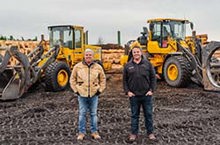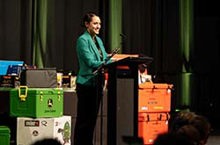
While Waikato region has decreased its gross greenhouse gas emissions by three percent since the baseline Waikato Regional Greenhouse Gas (GHG) Inventory of 2015/16, net emissions were higher due to a recent significant increase in harvest volumes.
The results of the 2021/22 inventory were presented to the Climate Action Committee earlier this month.
Given the role of forests in sequestration to offset emissions, and the increase in harvest volumes highlighted in this inventory, it has been recommended that a regional study of Waikato forestry be conducted.
A recommendation was also made to include GHG emissions from organic soils in the next inventory.
The committee heard that the three percent decrease in gross emissions (12.0 MtCO2e, down from 12.4 MtCO2e in 2015/16) was largely due to reductions in agricultural emissions, specifically a reduction in dairy stock numbers.
The inventory, which is held every three years, includes a breakdown of the region according to districts related to territorial authorities, with gross emissions for 2021/22 ranging from 407,086 tCO2e for Thames-Coromandel district to 2.318 MtCO2e for the Waikato district.
Agriculture still dominates the sectors, making up 67% of the gross emissions.
Transport was the next highest sector, making up 16% of emissions in 2021/22, followed by stationary energy at 13%.
Net emissions for the Waikato were 52% higher (10.3 MtCO2e, up from 6.8 MtCO2e in 2015/16) than the baseline year due to the significant increase in harvest volumes.
A supplementary report of emissions from organic soils, which relates to the subsidence and decomposition of drained peatlands, was undertaken alongside the 2021/22 inventory.
It showed that the GHG emissions from organic soils amounted to about 11% of the total gross emissions regionwide, or 1.5 Mt CO2e.
Climate Action Committee Chair Councillor Jennifer Nickel says while it was pleasing to see a reduction in gross emissions, “it is still nowhere near the pace or scale of change science tells us is required”.
She says the 52% increase net emissions demonstrated the vulnerability of relying on tree planting to reduce emissions.
“Reducing total emissions across all sectors at their source is key to making a meaningful difference.”
Waikato Regional Council has also updated its Climate Action Roadmap to reflect legislative changes, national climate plans, updated climate science projections, the new regional greenhouse gas emissions inventory and the council’s new strategic direction for 2022-2025.
The purpose of the Roadmap is to integrate climate change responses across all council activities and guide discussions with iwi partners and stakeholders. Staff use the Roadmap to guide work programme planning and delivery, while stakeholders can use the information to consider how they might wish to collaborate to mitigate impacts on the climate and increase resilience.
"It’s more urgent than ever that we do things more sustainably, and even restoratively, and it will take all sectors and communities working together to implement solutions,” says Councillor Nickell.










